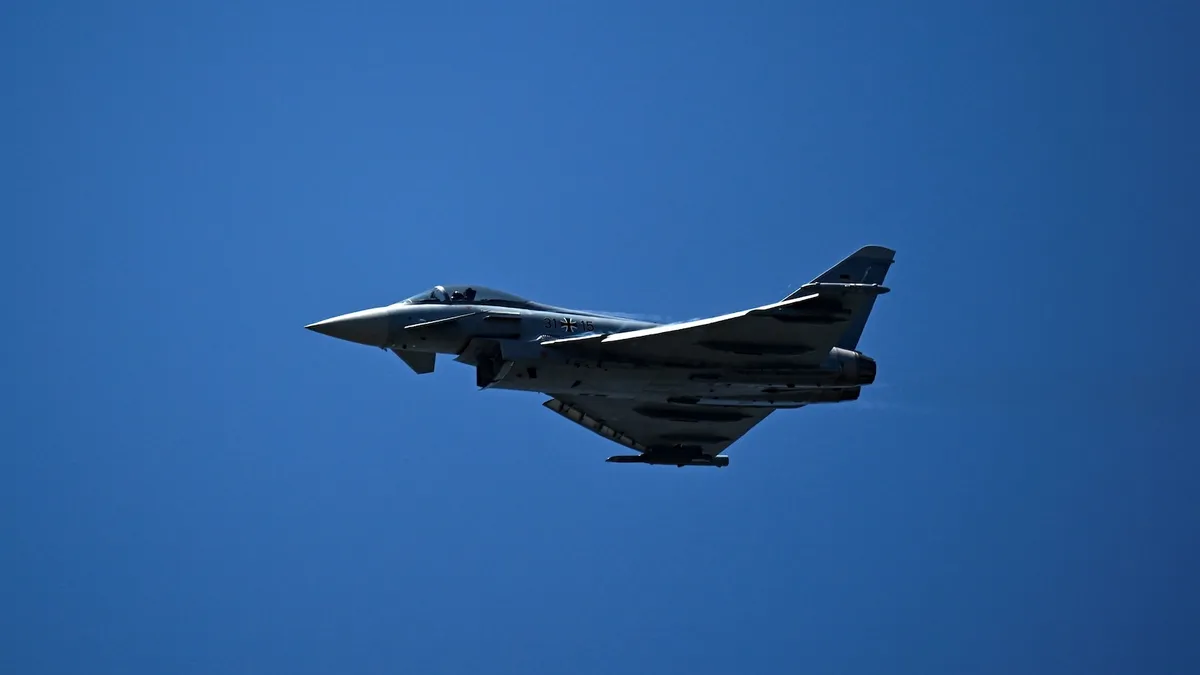
LONDON -- In a significant escalation of tensions in Eastern Europe, two German fighter jets were scrambled to the Romanian-Ukrainian border on Tuesday night. This rapid response was initiated following a Russian drone attack in the frontier region, according to a statement released by Romania's Defense Ministry. The situation underscores the ongoing military threats posed by Russia in the wake of its invasion of Ukraine.
Ukraine's air force reported a substantial assault, revealing that Russia launched 93 drones and two ballistic missiles overnight. Remarkably, Ukrainian defenses managed to intercept 62 of these drones and one missile. The air force documented drone and missile impacts across 20 different locations, indicating the widespread nature of the attacks. Oleg Kiper, the head of the regional Odesa administration, confirmed that drones targeted key infrastructure and production facilities in the city of Izmail, situated along the Danube River, which borders Romania, a NATO member.
As a result of the drone strikes, fires erupted at the affected sites, leading to at least one reported injury. Kiper's updates highlight the growing concern over the threat of Russian attacks on Ukrainian infrastructure, especially in areas close to NATO borders.
The urgency of the situation prompted the Romanian Defense Ministry to announce the deployment of two German Air Force Typhoon fighters to monitor the air situation in the border area of Tulcea County, Romania. These aircraft are part of NATO's Enhanced Air Policing missions, which were established along the alliance's eastern flank following Russia's annexation of Crimea and its aggression in eastern Ukraine in 2014.
Romania's aerial surveillance system identified groups of drones launched by the Russian Federation that targeted Ukrainian ports on the Danube. Fortunately, there were no violations of Romanian national airspace during this mission, a critical point amid increasing military tensions in the region.
Allied aircraft have frequently been scrambled in NATO nations such as Poland and Romania in response to Russian long-range attacks on Ukraine. These attacks often aim at locations near Ukraine's borders with NATO allies, raising alarms about the potential for further escalation. In fact, there have been instances where Russian drones and missiles have breached NATO airspace, with remnants of these munitions discovered in Romania, Lithuania, and Latvia. Additionally, fragments of Russian missiles have been found in Moldova, a non-NATO state that borders Ukraine to the southwest.
In a counterclaim, Russia's Defense Ministry stated that its forces successfully shot down at least 42 Ukrainian drones during the overnight hours leading into Wednesday morning. This assertion highlights the ongoing back-and-forth of military engagements between the two nations.
Furthermore, in response to the overnight strikes, temporary flight restrictions were implemented at several airports across Russia, including Volgograd, Saratov, Samara, Tambov, and Nizhny Novgorod, as reported by Russia's federal air agency, Rosaviatsiya. These measures underscore the heightened state of alert and operational adjustments both nations are making amid this ongoing conflict.
The current situation remains fluid, and the implications of these military actions continue to resonate across international borders, drawing NATO further into the fray as tensions mount in Eastern Europe.